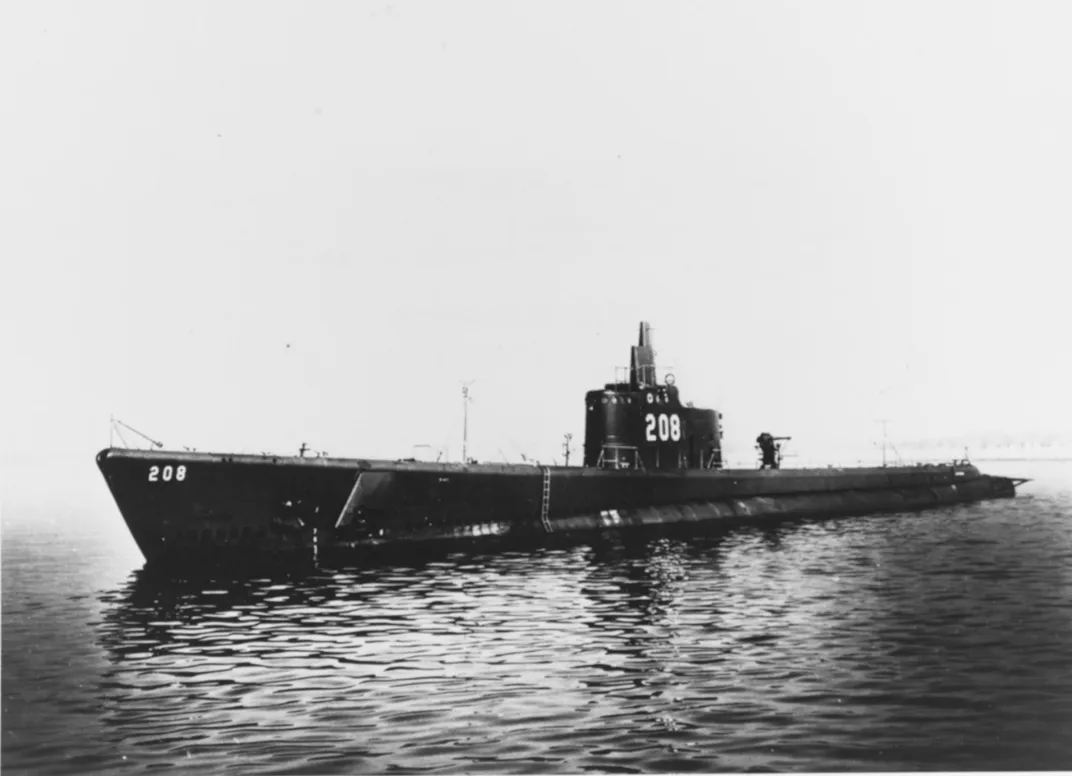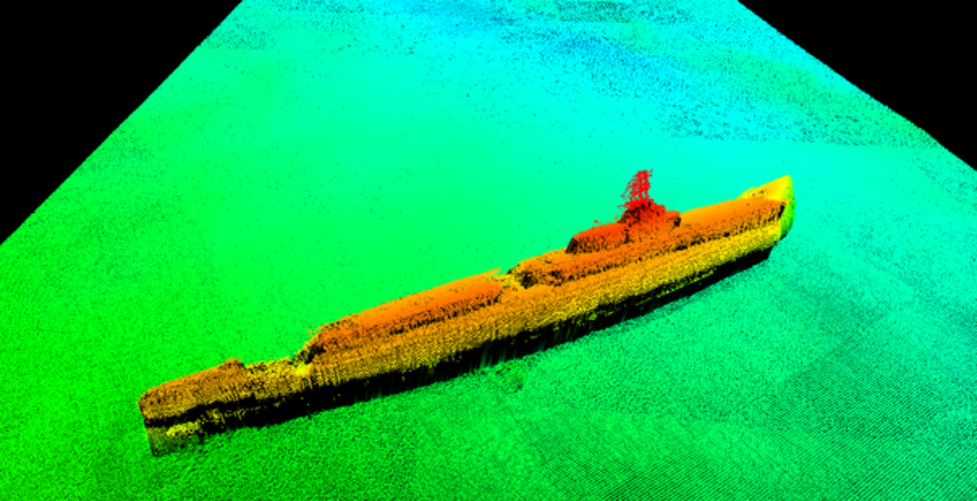American Submarine Lost in WWII Located Off Okinawa
Explorers found the “Grayback,” which sank in 1944 with 80 U.S. sailors aboard, after correcting a single digit mistranslation
After underwater explorer Tim Taylor found the wreck of the U.S.S. R-12—a submarine that sank off Key West during World War II—in 2010, he decided to embark on an ambitious undertaking: namely, locating all 52 U.S. submarines lost over the course of the conflict.
Taylor, now head of the Lost 52 Project, announced the group’s fifth find this past weekend. Per a press release, the explorer and his team discovered the wreck of the U.S.S. Grayback, a Navy submarine credited with sinking 14 enemy ships, off the Japanese island of Okinawa on June 5 of this year. Dubbed one of the “most successful submarines of the war,” the Grayback sank during combat patrol with 80 American sailors still onboard.
The Lost 52 researchers located the wreck at a depth of 1,427 feet. Thanks to a single mistranslated number, the Navy had spent more than 75 years believing the submarine sank more than 100 miles away from its actual resting place.
As Harmeet Kaur reports for CNN, the Grayback departed Pearl Harbor for its tenth combat patrol of the war on January 28, 1944. Bound for the East China Sea, the submarine sank two Japanese cargo ships on February 19, leaving it equipped with just two torpedoes. Although the Grayback was scheduled to arrive at Midway Island for rearmament on March 7, it failed to appear and was listed as missing, presumed lost, on March 30.
According to the New York Times’ John Ismay, the U.S. Navy published the results of an investigation into its missing submarines’ whereabouts in 1949. Titled U.S. Submarine Losses, World War II, the book contained a crucial error only discovered in 2018, when Taylor asked fellow sub-enthusiast Yutaka Iwasaki to re-examine the daily reports filed by sailors stationed at the Japanese Imperial Navy air base in Naha, Okinawa. Iwasaki translated a February 27, 1944, dispatch describing the destruction of an American submarine believed to be the Grayback and found that its coordinates differed from the U.S. naval record by just one digit.
The Lost 52 team traveled to the coast of Okinawa in June, exploring the 1,400-foot waters with a 14-foot-long autonomous underwater vehicle (AUV). But the expedition was plagued by mechanical and electrical problems, and on the second to last day of the trip, the AUV malfunctioned just one third of the way through a planned 24-hour dive. The crew retrieved the drone, expecting to pack it up and head home, but upon reviewing the images, Taylor noticed two anomalies on the seafloor.
This time, the group sent a remotely operated vehicle (ROV) to explore the area. Several hours later, Ismay writes, Taylor and the crew found themselves in front of the Grayback’s hull. The submarine’s deck gun was resting on the seafloor about 400 feet away.
ABC News reports that the Lost 52 Project staff attempted to contact the Grayback crew’s surviving family members before publicly announcing the discovery. Kathy Taylor was one of the first individuals informed; her uncle and godfather, electrician’s mate John Patrick King, was one of the sailors who went down with the ship.
“I committed from the very beginning, from a little girl, that I was [going to] find him or follow him or keep his memory alive, whatever I could do,” says Taylor. “I thought [the submarine] was probably blown to pieces. That’s what I thought. And obviously it’s not.”
Christine Dennison, Taylor’s wife and exploration partner, tells ABC that the Lost 52 missions are primarily dedicated to honoring the sacrifices of those who died for their country and bringing closure to their families.
The team is currently working to locate other lost submarines (per the Times, only 47 of the lost vessels are considered discoverable, as the other five ran aground or were destroyed), but Taylor says he won’t publicly discuss these missions yet.
“We do not tell people that we’re looking for these because we don’t want to disappoint people, and we don’t want to blast it across the internet until it’s done properly through the Navy,” Taylor explains to ABC. “With the technology that we're using, and the ability to cover large swaths of ground, we're looking at the potential to find several more.”
The Navy confirmed the Grayback’s discovery, giving the wreck some legal protection from disturbance. Although the submarine is situated deep enough to prevent opportunistic salvagers from reaching it, other WWII wrecks in southeast Asia have been targeted by metal thieves who plunder ships recognized as war graves and even dump the human remains found onboard into unmarked mass graves.




